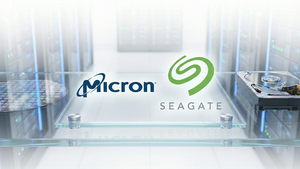
The intricate world of quantum computing is increasingly finding its bedrock in an unexpected yet familiar material: semiconductors. Once the exclusive domain of classical electronics, these ubiquitous materials are now proving to be the linchpin in advancing quantum technology, offering a scalable, robust, and manufacturable platform for the elusive quantum bit, or qubit. Recent breakthroughs in semiconductor fabrication, material purity, and qubit control are not just incremental improvements; they represent a fundamental shift, accelerating the journey from theoretical quantum mechanics to practical, real-world quantum computers.
This synergy between traditional semiconductor manufacturing and cutting-edge quantum physics is poised to unlock unprecedented computational power. By leveraging decades of expertise in silicon-based fabrication, researchers are overcoming some of the most formidable challenges in quantum computing, including achieving higher qubit fidelity, extending coherence times, and developing pathways for massive scalability. The immediate significance of these developments is profound, promising to democratize access to quantum hardware and usher in an era where quantum capabilities are no longer confined to highly specialized laboratories but become an integral part of our technological infrastructure.
Engineering the Quantum Future: Breakthroughs in Semiconductor Qubit Technology
The journey towards practical quantum computing is being meticulously engineered at the atomic scale, with semiconductors serving as the canvas for groundbreaking innovations. Recent advancements have pushed the boundaries of qubit fidelity, material purity, and integration capabilities, fundamentally altering the landscape of quantum hardware development. These aren't just incremental steps; they represent a concerted effort to leverage established semiconductor manufacturing paradigms for a revolutionary new computing model.
A critical metric, qubit fidelity, has seen remarkable progress. Researchers have achieved single-qubit gate fidelities exceeding 99.99% and two-qubit gate fidelities surpassing 99% in silicon spin qubits, a benchmark widely considered essential for building fault-tolerant quantum computers. Notably, some of these high-fidelity operations are now being demonstrated on chips manufactured in standard semiconductor foundries, a testament to the platform's industrial viability. This contrasts sharply with earlier quantum systems that often struggled to maintain coherence and perform operations with sufficient accuracy, making error correction an insurmountable hurdle. The ability to achieve such precision in a manufacturable silicon environment is a game-changer.
Furthermore, material purity has emerged as a cornerstone of stable quantum operation. Natural silicon contains the silicon-29 isotope, whose nuclear spin acts as an uncontrollable source of noise, causing qubits to lose their quantum information. Scientists from the University of Manchester and the University of Melbourne have developed methods to engineer ultra-pure silicon-28, reducing the disruptive silicon-29 content to an unprecedented 2.3 parts per million. This targeted purification process, which is scalable and cost-effective, provides an almost pristine environment for qubits, dramatically extending their coherence times and reducing error rates compared to devices built on natural silicon.
The inherent CMOS compatibility of silicon spin qubits is perhaps their most significant advantage. By utilizing standard Complementary Metal-Oxide-Semiconductor (CMOS) fabrication processes, quantum chip developers can tap into decades of established infrastructure and expertise. Companies like Intel (NASDAQ: INTC) and Diraq are actively fabricating two-qubit devices in 22nm FinFET and 300mm wafer-scale CMOS foundries, demonstrating that quantum hardware can be produced with high yield and precision, akin to classical processors. This approach differs fundamentally from other qubit modalities like superconducting circuits or trapped ions, which often require specialized, non-standard fabrication techniques, posing significant scaling challenges.
Beyond the qubits themselves, the development of cryogenic control chips is revolutionizing system architecture. Traditional quantum computers require millions of wires to connect room-temperature control electronics to qubits operating at millikelvin temperatures, creating a "wiring bottleneck." Intel's "Horse Ridge" chip, fabricated using 22nm FinFET CMOS technology, and similar innovations from the University of Sydney and Microsoft (NASDAQ: MSFT), can operate at temperatures as low as 3 Kelvin. These chips integrate control electronics directly into the cryogenic environment, significantly reducing wiring complexity, power consumption, and latency, thereby enabling the control of thousands of qubits from a single, compact system.
Initial reactions from the quantum computing research community and industry experts have been overwhelmingly optimistic, tempered with a realistic view of the challenges ahead. There's significant enthusiasm for silicon spin qubits as a "natural match" for the semiconductor industry, offering a clear path to scalability and fault tolerance. The achievement of ultra-pure silicon-28 is hailed as a "significant milestone" that could "revolutionize the future of quantum computing." While the realization of highly stable topological qubits, pursued by Microsoft, remains a challenging frontier, any verified progress generates considerable excitement for its potential to inherently protect quantum information from noise. The focus is now shifting towards translating these technical triumphs into practical, commercially viable quantum solutions.
Reshaping the Tech Landscape: Competitive Shifts and Market Opportunities
The rapid advancements in semiconductor quantum computing are not merely scientific curiosities; they are catalysts for a profound reshaping of the tech industry, poised to create new market leaders, disrupt established services, and ignite intense competition among global technology giants and agile startups alike. The compatibility of quantum devices with existing semiconductor fabrication processes provides a unique bridge to commercialization, benefiting a diverse ecosystem of companies.
Major tech players like IBM (NYSE: IBM), Google (NASDAQ: GOOGL), and Intel (NASDAQ: INTC) are at the forefront, heavily investing in full-stack quantum systems, with significant portions of their research dedicated to semiconductor-based qubits. Intel, for instance, is a key proponent of silicon spin qubits, leveraging its deep expertise in chip manufacturing. Microsoft (NASDAQ: MSFT), while also pursuing a cloud-based quantum service through Azure, is uniquely focused on the challenging but potentially more robust topological qubits. These companies are not just building quantum computers; they are strategically positioning themselves to offer Quantum Computing as a Service (QCaaS), integrating quantum capabilities into their expansive cloud infrastructures.
The ripple effect extends to the traditional semiconductor industry. Foundries like Taiwan Semiconductor Manufacturing Company (TSMC) (NYSE: TSM) are becoming indispensable, as the demand for ultra-precise fabrication and specialized materials for quantum chips escalates. Companies specializing in cryogenics (e.g., Oxford Instruments, Bluefors) and advanced control electronics (e.g., Keysight Technologies (NYSE: KEYS), Qblox) will also see burgeoning markets for their niche, yet critical, components. Furthermore, quantum computing itself holds the potential to revolutionize classical chip design and manufacturing, leading to more efficient classical processors through quantum-enhanced simulations and optimizations.
For AI labs and software companies, the implications are transformative. Quantum computers promise to accelerate complex AI algorithms, leading to more sophisticated machine learning models, enhanced data processing, and optimized large-scale logistics. Companies like NVIDIA (NASDAQ: NVDA), already a powerhouse in AI-optimized GPUs, are exploring how their hardware can interface with and even accelerate quantum workloads. The competitive landscape will intensify as companies vie for access to these advanced computational tools, which will become a strategic advantage in developing next-generation AI applications.
The most significant potential disruption lies in cybersecurity. The impending threat of quantum computers breaking current encryption standards (dubbed "Y2Q" or "Year to Quantum") necessitates a complete overhaul of global data security protocols. This creates an urgent, multi-billion-dollar market for quantum-resistant cryptographic solutions, where cybersecurity firms and tech giants are racing to develop and implement new standards. Beyond security, industries such as materials science, drug discovery, logistics, and finance are poised for radical transformation. Quantum algorithms can simulate molecular interactions with unprecedented accuracy, optimize complex supply chains, and perform sophisticated financial modeling, offering exponential speedups over classical methods and potentially disrupting existing product development cycles and operational efficiencies across numerous sectors.
Companies are adopting diverse strategies to carve out their market share, ranging from full-stack development to specialization in specific qubit architectures or software layers. Cloud access and hybrid quantum-classical computing models are becoming standard, democratizing access to quantum resources. Strategic partnerships with academia and government, coupled with massive R&D investments, are critical for staying ahead in this rapidly evolving field. The race for quantum advantage is not just about building the most powerful machine; it's about establishing the foundational ecosystem for the next era of computation.
A New Frontier: Quantum-Enhanced AI and its Broader Implications
The seamless integration of semiconductor advancements in quantum computing is poised to usher in a new era for artificial intelligence, moving beyond the incremental gains of classical hardware to a paradigm shift in computational power and efficiency. This convergence is not just about faster processing; it's about enabling entirely new forms of AI, fundamentally altering the fabric of numerous industries and raising profound questions about security and ethics.
Within the broader AI landscape, semiconductor quantum computing acts as a powerful accelerator, capable of tackling computational bottlenecks that currently limit the scale and complexity of deep learning and large language models. Quantum co-processors and full quantum AI chips can dramatically reduce the training times for complex AI models, which currently consume weeks of computation and vast amounts of energy on classical systems. This efficiency gain is critical as AI models continue to grow in size and sophistication. Furthermore, quantum principles are inspiring novel AI architectures, such as Quantum Neural Networks (QNNs), which promise more robust and expressive models by leveraging superposition and entanglement to represent and process data in entirely new ways. This synergistic relationship extends to AI's role in optimizing quantum and semiconductor design itself, creating a virtuous cycle where AI helps refine quantum algorithms, enhance error correction, and even improve the manufacturing processes of future classical and quantum chips.
The impacts of this quantum-AI convergence will be felt across virtually every sector. In healthcare and biotechnology, it promises to revolutionize drug discovery and personalized medicine through unprecedented molecular simulations. Finance and logistics stand to gain from highly optimized algorithms for portfolio management, risk analysis, and supply chain efficiency. Crucially, in cybersecurity, while quantum computers pose an existential threat to current encryption, they also drive the urgent development of post-quantum cryptography (PQC) solutions, which will need to be embedded into semiconductor hardware to protect future AI operations. Quantum-enhanced AI could also be deployed for both advanced threat detection and, disturbingly, for more sophisticated malicious attacks.
However, this transformative power comes with significant concerns. The most immediate is the security threat to existing cryptographic standards, necessitating a global transition to quantum-resistant algorithms. Beyond security, ethical implications are paramount. The inherent complexity of quantum systems could exacerbate issues of AI bias and explainability, making it even harder to understand and regulate AI decision-making. Questions of privacy, data sovereignty, and the potential for a widening digital divide between technologically advanced and developing regions also loom large. The potential for misuse of quantum-enhanced AI, from mass surveillance to sophisticated deepfakes, underscores the urgent need for robust ethical frameworks and governance.
Comparing this moment to previous AI milestones reveals its profound significance. Experts view the advent of quantum AI in semiconductor design as a fundamental shift, akin to the transition from CPUs to GPUs that powered the deep learning revolution. Just as GPUs provided the parallel processing capabilities for complex AI workloads, quantum computers offer unprecedented parallelism and data representation, pushing beyond the physical limits of classical computing and potentially evolving Moore's Law into new paradigms. Demonstrations of "quantum supremacy," where quantum machines solve problems intractable for classical supercomputers, highlight this transformative potential, echoing the disruptive impact of the internet or personal computers. The race is on, with tech giants like IBM aiming for 100,000 qubits by 2033 and Google targeting a million-qubit system, signifying a strategic imperative for the next generation of computing.
The Quantum Horizon: Near-Term Milestones and Long-Term Visions
The journey of semiconductor quantum computing is marked by ambitious roadmaps and a clear vision for transformative capabilities in the coming years and decades. While significant challenges remain, experts predict a steady progression from current noisy intermediate-scale quantum (NISQ) devices to powerful, fault-tolerant quantum computers, driven by continuous innovation in semiconductor technology.
In the near term (next 5-10 years), the focus will be on refining existing silicon spin qubit technologies, leveraging their inherent compatibility with CMOS manufacturing to achieve even higher fidelities and longer coherence times. A critical development will be the widespread adoption and improvement of hybrid quantum-classical architectures, where quantum processors act as accelerators for specific, computationally intensive tasks, working in tandem with classical semiconductor systems. The integration of advanced cryogenic control electronics, like those pioneered by Intel (NASDAQ: INTC), will become standard, enabling more scalable and efficient control of hundreds of qubits. Crucially, advancements in quantum error mitigation and the nascent development of logical qubits – where information is encoded across multiple physical qubits to protect against errors – will be paramount. Companies like Google (NASDAQ: GOOGL) and Microsoft (NASDAQ: MSFT) have already demonstrated logical qubits outperforming physical ones in error rates, a pivotal step towards true fault tolerance. Early physical silicon quantum chips with hundreds of qubits are expected to become increasingly accessible through cloud services, allowing businesses and researchers to explore quantum algorithms. The market itself is projected to see substantial growth, with estimates placing it to exceed $5 billion by 2033, driven by sustained venture capital investment.
Looking further into the long term (beyond 10 years), the vision is to achieve fully fault-tolerant, large-scale quantum computers capable of addressing problems currently beyond the reach of any classical machine. Roadmaps from industry leaders like IBM (NYSE: IBM) anticipate reaching hundreds of logical qubits by the end of the decade, capable of millions of quantum gates, with a target of 2,000 logical qubits by 2033. Microsoft continues its ambitious pursuit of a million-qubit system based on topological qubits, which, if realized, promise inherent stability against environmental noise. This era will also see the maturation of advanced error correction codes, significantly reducing the overhead of physical qubits required for each logical qubit. Furthermore, quantum-accelerated AI is expected to become routine in semiconductor manufacturing itself, optimizing design cycles, refining processes, and enabling the discovery of entirely new materials and device concepts, potentially leading to post-CMOS paradigms.
The potential applications and use cases on the horizon are vast and transformative. In drug discovery and materials science, quantum computers will simulate molecular interactions with unprecedented accuracy, accelerating the development of new pharmaceuticals, catalysts, and advanced materials for everything from batteries to next-generation semiconductors. Financial services will benefit from enhanced risk analysis and portfolio optimization. Critically, the synergy between quantum computing and AI is seen as a "mutually reinforcing power couple," poised to accelerate everything from high-dimensional machine learning tasks and pattern discovery to potentially even the development of Artificial General Intelligence (AGI). In cybersecurity, while the threat to current encryption is real, quantum computing is also essential for developing robust quantum-resistant cryptographic algorithms and secure quantum communication protocols.
Despite this promising outlook, significant challenges must be addressed. Qubit stability and coherence remain a primary hurdle, as qubits are inherently fragile and susceptible to environmental noise. Developing robust error correction mechanisms that do not demand an unfeasible overhead of physical qubits is crucial. Scalability to millions of qubits requires atomic-scale precision in fabrication and seamless integration of complex control systems. The high infrastructure requirements and costs, particularly for extreme cryogenic cooling, pose economic barriers. Moreover, a persistent global talent shortage in quantum computing expertise threatens to slow widespread adoption and development.
Experts predict that the first instances of "quantum advantage"—where quantum computers outperform classical methods for useful, real-world tasks—may be seen by late 2026, with more widespread practical applications emerging within 5 to 10 years. The continuous innovation, with the number of physical qubits doubling every one to two years since 2018, is expected to continue, leading to integrated quantum and classical platforms and, ultimately, autonomous AI-driven semiconductor design. Nations and corporations that successfully leverage quantum technology are poised to gain significant competitive advantages, reshaping the global electronics supply chain and reinforcing the strategic importance of semiconductor sovereignty.
The Dawn of a Quantum Era: A Transformative Partnership
The journey of quantum computing, particularly through the lens of semiconductor advancements, marks a pivotal moment in technological history, laying the groundwork for a future where computational capabilities transcend the limits of classical physics. The indispensable role of semiconductors, from hosting fragile qubits to controlling complex quantum operations, underscores their foundational importance in realizing this new era of computing.
Key takeaways from this evolving landscape are manifold. Semiconductors provide a scalable and robust platform for qubits, leveraging decades of established manufacturing expertise. Breakthroughs in qubit fidelity, material purity (like ultra-pure silicon-28), and CMOS-compatible fabrication are rapidly bringing fault-tolerant quantum computers within reach. The development of cryogenic control chips is addressing the critical "wiring bottleneck," enabling the control of thousands of qubits from compact, integrated systems. This synergy between quantum physics and semiconductor engineering is not merely an incremental step but a fundamental shift, allowing for the potential mass production of quantum hardware.
In the broader context of AI history, this development is nothing short of transformative. The convergence of semiconductor quantum computing with AI promises to unlock unprecedented computational power, enabling the training of vastly more complex AI models, accelerating data analysis, and tackling optimization problems currently intractable for even the most powerful supercomputers. This is akin to the shift from CPUs to GPUs that fueled the deep learning revolution, offering a pathway to overcome the inherent limitations of classical hardware and potentially catalyzing the development of Artificial General Intelligence (AGI). Furthermore, AI itself is playing a crucial role in optimizing quantum systems and semiconductor design, creating a virtuous cycle of innovation.
The long-term impact is expected to be a profound revolution across numerous sectors. From accelerating drug discovery and materials science to revolutionizing financial modeling, logistics, and cybersecurity, quantum-enhanced AI will redefine what is computationally possible. While quantum computers are likely to augment rather than entirely replace classical systems, they will serve as powerful co-processors, accessible through cloud services, driving new efficiencies and innovations. However, this future also necessitates careful consideration of ethical frameworks, particularly concerning cybersecurity threats, potential biases in quantum AI, and privacy concerns, to ensure that these powerful technologies benefit all of humanity.
In the coming weeks and months, the quantum computing landscape will continue its rapid evolution. We should watch for sustained improvements in qubit fidelity and coherence, with companies like IonQ (NYSE: IONQ) already announcing world records in two-qubit gate performance and ambitious plans for larger qubit systems. Progress in quantum error correction, such as Google's (NASDAQ: GOOGL) "below threshold" milestone and IBM's (NYSE: IBM) fault-tolerant roadmap, will be critical indicators of maturation. The continued development of hybrid quantum-classical architectures, new semiconductor materials like hexagonal GeSi, and advanced quantum AI frameworks will also be key areas to monitor. As investments pour into this sector and collaborations intensify, the race to achieve practical quantum advantage and reshape the global electronics supply chain will undoubtedly accelerate, ushering in a truly quantum era.
This content is intended for informational purposes only and represents analysis of current AI developments.
TokenRing AI delivers enterprise-grade solutions for multi-agent AI workflow orchestration, AI-powered development tools, and seamless remote collaboration platforms.
For more information, visit https://www.tokenring.ai/.





